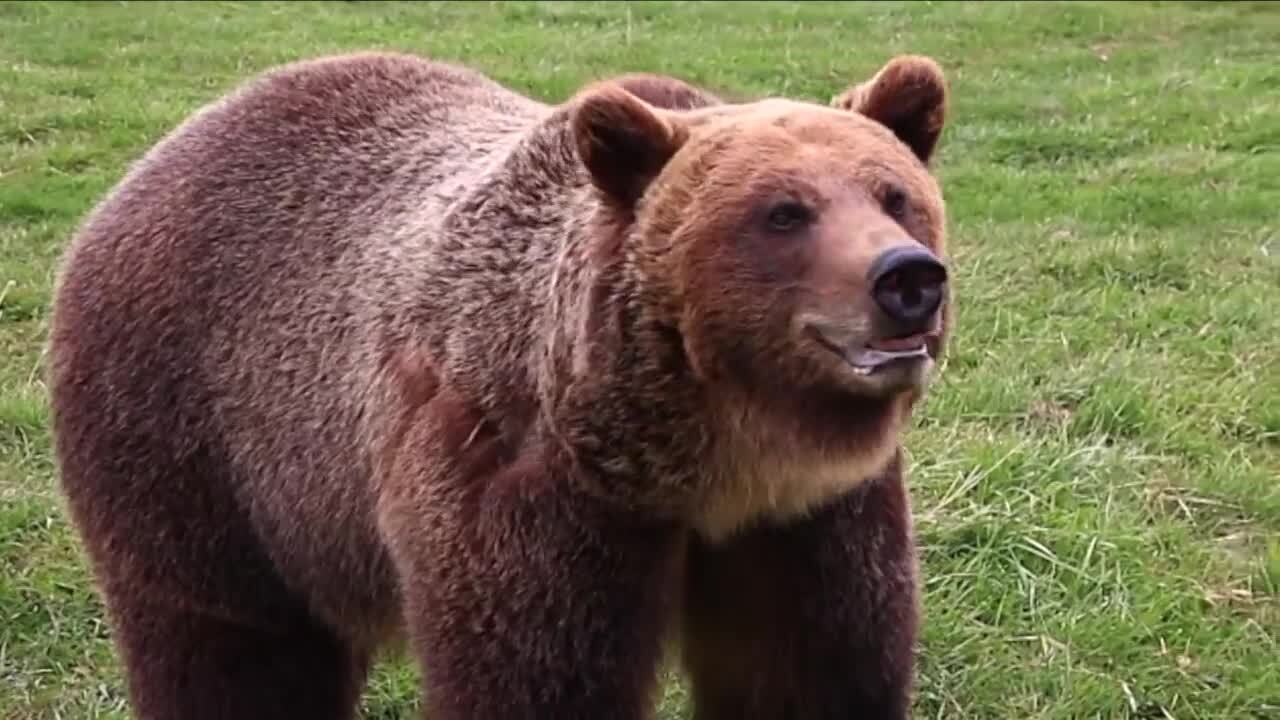MISSOULA - Wildlife advocates opposed a bill regarding the management of grizzly bears partly because there was no mention of nonlethal control or improving connectivity between populations.
On Tuesday afternoon, the Senate Fish and Game committee heard Sen. Mike Lang, R-Malta, introduce Senate Bill 85 ensuring FWP “manages grizzly bear populations at levels to maintain their delisted status.”
Written by Montana Fish, Wildlife & Parks (FWP), the bill says grizzly bears are recovered and once delisted, grizzlies should be managed by the state so that they remain delisted by tracking mortality due to hunting and moving bears out of the population. It also says that FWP should use proactive measures to “prevent conflicts, including trapping and lethal measures.”
FWP Chief of Staff Quentin Kujala said the bill doesn’t do anything more than put into statute FWP’s intent to manage grizzly bears, with particular emphasis on tracking mortality.
Committee member Sen. Daniel Emrich, R-Great Falls, asked if the bill was necessary for either delisting or managing grizzly bears. Kujala said it wasn’t necessary.
“We want to put it in statute,” Kujala said. “This is not a conversation about change in approach.”
The grizzly bear is still protected as threatened under the Endangered Species Act so FWP is still required to follow federal law when dealing with grizzly bears. The U.S. Fish and Wildlife Service (USFWS) must review all grizzly bear deaths and requests for exceptions to the Endangered Species Act.
The populations in the Greater Yellowstone and Northern Continental Divide ecosystems have estimated populations of between 700 and 1,000 bears each. But populations in the other recovery areas are doing poorly, if they exist at all.
Neither the Bitterroot nor the Northern Cascade ecosystems officially have bears although there have been occasional reports of transitory grizzlies, particularly in the Bitterroot.
The Cabinet-Yaak and Selkirk populations have less than 50 bears each and depend on the movement — voluntary or otherwise — of bears from the Northern Continental Divide if they are ever to grow to a size where the populations are self-sustaining.
Wyoming has demanded that the USFWS delist the Greater Yellowstone population and Montana has done the same for the Northern Continental Divide population. Both states insist the populations are recovered.
Sen. Willis Curdy asked Kujala why the bears weren’t being delisted and Kujala said he didn’t know. When asked the same question, Endangered Species Coalition spokesman Nick Gevock knew.
In 2017, a Missoula federal judge ruled that, under the Endangered Species Act, populations cannot be delisted one at a time unless they’re genetically distinct. Since it depends on the Northern Continental Divide population, the Cabinet-Yaak population isn’t distinct but it would likely die out if grizzlies were delisted.
Overall, the species isn’t stable because each population exists on an island of land where bears can’t easily reach the other populations. That means each population could become inbred with time and survival would begin to decrease. So the judge required that wildlife agencies ensure that connectivity and thus gene flow between could be maintained.
“When grizzlies went on the list, we were so focused on those core areas, because the bears were in such dire shape, that we didn’t talk about what’s in between,” Gevock said. “How do we build a public land and private land landscape that allows bears to move through there and get connected? That’s where our energy needs to be.”
Even though the bill isn’t needed, it prompted a good amount of testimony, reflecting the divide in how Montanans think grizzly bears should be handled.
Proponents included FWP, the Montana Trapper’s Association, the Montana Outfitters and Guides Association, the Montana Stockgrowers Association and the Farm Bureau Federation, the Montana Wildlife Federation and Montana Sportsmen for Fish and Wildlife.
“We should manage our endangered species when they’re above quota, by the state rather than Washington, D.C. It doesn’t matter whether it’s grizzly bears or wolves or wheat or farming or whatever,” said former Malta Sen. John Brendan.
Opponents included wildlife advocates from the Endangered Species Coalition, Wolves of the Rockies, the Gallatin Wildlife Association and Montana Audubon. Most pointed to the increasingly liberal wolf hunting and trapping season, saying that a slow-reproducing species like grizzly bears would be more rapidly depleted by snaring, trapping, hunting over bait, night hunting, all of which was mandated two years ago for wolves.
Lisa Upson of People and Carnivores said that bears are often better managed by nonlethal techniques than lethal ones, so language to that effect should be included if the bill were to move forward.
“Lethal control may solve an issue related to one animal, one bear and the associated problems. But it is generally ineffective for reducing conflicts for any one landowner. Bears move around,” Upson said. “Deterrent tools don’t move - they protect property. Let’s move from the notion that we can control wildlife to the idea that by taking some basic steps, we can protect our property and ourselves.”
Gevock added that the Blackfoot Challenge has been able to reduce wolf and bear conflict by 93% by using nonlethal techniques.
The committee took no action on the bill.
Contact reporter Laura Lundquist at lundquist@missoulacurrent.com.


